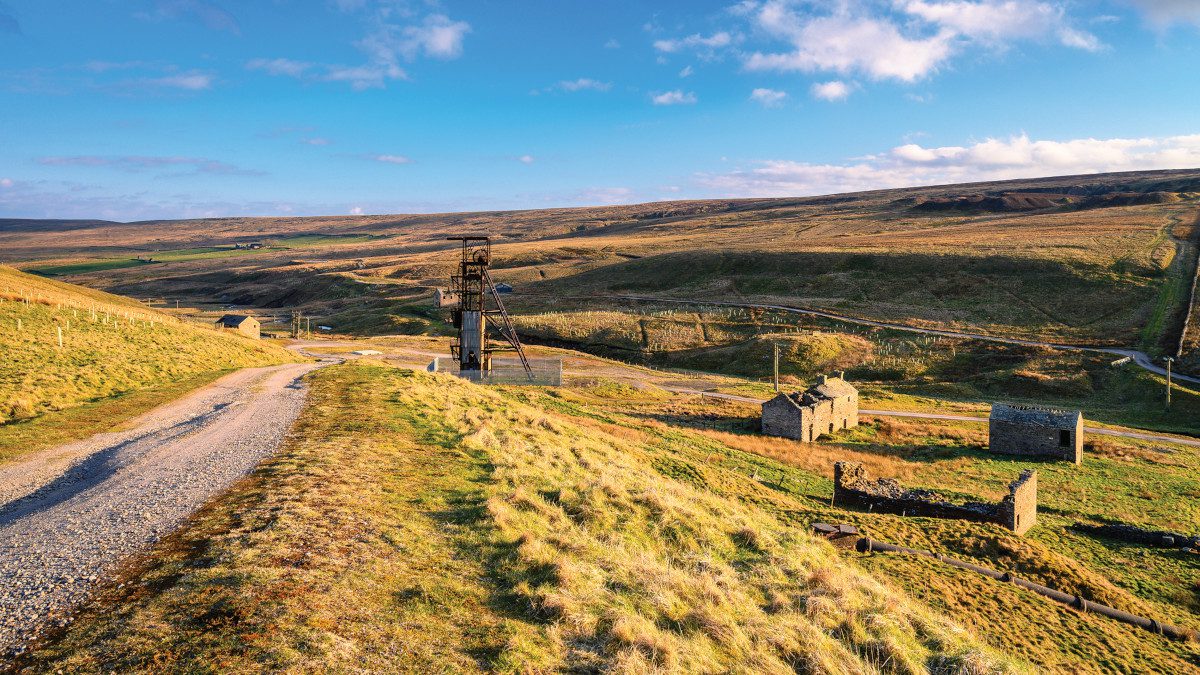
Water- and energy-hungry mining operations have made lithium an uncomfortable topic for those championing a transition to renewable energy. Can it be mined in a more environmentally friendly way? One or two new approaches appear to make the case that it can, including an initiative that hopes to begin mining operations in the North of England in the next couple of years.
Demand has obviously soared for lithium in recent years, with prices following an 11-fold increase between 2020 and 2022.1 But the material is hard to extract from the ground. Much of the world’s supply seems to reside in Latin America, where mining operations have now made Chile and Argenina major suppliers, but most of it comes from Australia.
A 2022 UNDP document asks whether the race to exploit lithium is not a new El Dorado, referencing the mythical quest associated with so much tragic failure. The same report explains why lithium is so hard to exploit, principally because it requires significant investment while most of the profit comes from a long value chain that creates lithium batteries. There are limited gains for countries who simply extract and export it.
There are also the environmental costs associated with the way lithium mining has been undertaken to date. But new methods of extraction and new kinds of geological resource are being presented as a way to leave behind many of these problems.
Presenting at BlueTech Forum in Edinburgh in June,2 Durham-based Northern Lithium’s Nick Pople spoke about lithium’s “crazy supply chain”, and the fact that it’s not only “mined in an unsatisfactory way” but it’s also transported long distances. “The lithium in your car battery will have done maybe 35k miles already”, he said.
The aim is to get that down to a few dozen kilometres, then into a car, and into a car showroom, as he explained. And his own firm might be one of the closest to achieving that goal, although many other groups are looking for lithium in the UK (around 340, he said), and two other companies seem quite far along the path towards commercial extraction.
It’s estimated that the UK will need up to 80,000 tonnes per year by 2030 – and as much as 135,000 tonnes per year by 2040.3
Propitious geology is certainly one part of the equation, and deposits considered most promising for lithium exploration tend to be either mineral (rock) or brine deposits.4 Mineral deposits predominate in Australia, the world’s largest producer of lithium by far (around 54% globally). Rocks are crushed, ground and heated to extract the ores, in an energy-intensive process.
Brine-based lithium sources, on the other hand, tend to fall into two types: continental deposits, and geothermal or oilfield brines. “Continental” brine deposits have been the main source of lithium from brines.5 These are formed by the evaporation of water in arid or semi-arid inland areas, and the lithium is extracted from the brines that are pumped up from deep groundwater wells.
These account for the hundreds of salt lakes whose brines support Latin America’s lithium industry, with Chile being the second largest global producer (with around 24% of global supply). The process of extraction uses vast amounts of water, mainly salt water, but also a significant amount of freshwater for purification. Lithium mining firms in Chile and Argentina have been accused of depleting water resources, by up to 65 percent in the Salar de Atacama region.
Mining operations are also associated with an elevated risk of contaminating water basins, according to the UNDP.
Geothermal or oilfield brine are at an earlier stage of development, and account for much of the interest currently being generated in parts of Europe, where a few countries slip into the USGS’s 2022 list of prominent lithium resources worldwide, specifically Germany (3%), Czech Republic (1.5%) and Serbia (1.4%).6
But new resources are being uncovered all the time, and much interest is also apparent in Italy and the UK, for example.
Geothermal brines tend to be found deep underground, in areas also associated with geothermal or hydrocarbon reservoirs.
In May, UK firm Watercycle Technologies Ltd, announced it had successfully extracted lithium to produce battery-grade lithium carbonate from geothermal brines. The firm’s proprietary technology, called Direct Lithium Extraction and Crystallisation (DLEC™), was put to work on brines obtained from two geothermal wells from the Lazio, a province of central Italy.7
Watercycle Technologies has also been working with Weardale Lithium Lrd, one of two firms (along with Northern Lithium) to have secured exclusive access to boreholes in Weardale in the North Pennines. Weardale’s website explains that the boreholes were previously developed in 2004 and 2007, for geothermal purposes, and so have already been drilled, with more recent investigation identifying “high levels of lithium”.8
Three areas of the UK are currently the focus of exploration: Cumbria, the North Pennines and the Southwest. Cornish Lithium located reserves of lithium in the southwest in 2020, and has ongoing projects to develop lithium in geothermal waters and from hard rock.
Northern Lithium has also secured mineral rights in Weardale and, again with saline brines extracted from geothermal boreholes. NLi is working with technology firm Evove. The two completed trials in August 2023, in which they produced around 2kg of battery-grade lithium carbonate, at a purity level above 99.5%.
In late June, NLi and Evove signed a contract to install and trial a lithium extraction plant at a production site in County Durham.9
The initial module will be installed this autumn, as a precursor to a series of modular extensions that are intended to see it reach fullscale commercial production of battery grade lithium in 2027.
The advantage claimed for Evove’s DLE technology “lies in the ability to extract lithium at a high purity”, as NLi explains. Core to the approach is the use of membrane filtration technology, which “processes brines containing lithium very cleanly, reducing the energy, water and chemical footprint and improving the economics.”
As The Chemical Engineer reported last year, the firm’s approach employs a coating on the membrane, able to remove the divalent ions (i.e., magnesium, calcium and so on) making it easier to subsequently isolate the lithium. The last few divalent ions are removed by a subsequent ion-exchange stage, prior to the refining of the material to achieve a high purity.10
The group said it is targeting commercial production of up to 10,000 tonnes of battery-grade lithium per year in the North East within the next decade.
Both Weardale Lithium and Northern Lithium say they intend for their products to be used in local factories building electric vehicles.
The geopolitical complications of the present era obviously add impetus to efforts to produce a homegrown supply of many minerals. The EU this year announced plans to ensure at least 10% of its supply of critical minerals are extracted in Europe by 2030, with its European Critical Raw Materials Act.

In Serbia, Rio Tinto’s planned $2.4 billion mine in the Jadar Valley has mobilized unprecedented levels of public protest against lithium mining in the country, with the country’s president Aleksandar Vučić having warned in mid-August that this protest was the locus of a plot to carry out a Balkan “colour revolution”.11
Some of the protest seems located with antipathy towards the EU, and the Serbian mine is being developed from a memorandum of understanding that these resources will be brought into Europe’s supply chain. But protestors have also been vocal about the potential for environmental problems.
Much of the promise of emerging techniques to exploit lithium from brines is that it can be done “in an environmentally responsible and cost-effective way”, as Wearcycle Technologies’ literature puts it. While the case for new approaches to lithium mining is currently being made, it seems clear there is still some distance to travel to convince the public.
Notes
[1] US Geological Survey Mineral Commodity Summaries 2022 Data Release. See https://www.sciencebase.gov/catalog/item/6197ccbed34eb622f692ee1c
[2] BlueTech Forum 2024. Assembly Rooms, Edinburgh. 3-4 June 2024.
[3] Press release, “North of England partnership to deliver 1st UK-sourced Direct Lithium Extraction plant for domestic supply of lithium”, December 19, 2023. See https://www.northernlithium.co.uk/north-of-england-partnership-to-deliver-1supst-sup-uk-sourced-direct-lithium-extraction-plant-for-domestic-supply-of-lithium/.
[4] “The potential for lithium in the UK”, UK Critical Minerals Intelligence Centre. See https://ukcmic.org/downloads/reports/the-potential-for-lithium-in-the-uk-2022.pdf.
[5] ibid.
[6] US Geological Survey Mineral Commodity Summaries 2022 Data Release. See https://www.sciencebase.gov/catalog/item/6197ccbed34eb622f692ee1c
[7] Press release, “Battery grade lithium carbonate produced from central Italy brine”, May 2024, Watercycle Technologies Ltd.
[8] See https://weardalelithium.co/.
[9] “Northern Lithium places commercial order for a Direct Lithium Extraction demonstration plant from Evove”, June 26, 2024. See https://www.northernlithium.co.uk/strongnorthern-lithium-places-commercial-order-for-a-direct-lithium-extraction-demonstration-plant-from-evove-strong/.
[10] “UK lithium boost as engineers use membranes to extract lithium from brine”, The Chemical Engineer, 19 September 2023. See https://www.thechemicalengineer.com/news/uk-lithium-boost-as-engineers-use-membranes-to-extract-lithium-from-brine/.
[11] “Activist opposed to Rio Tinto lithium mine receives anonymous death threats”, The Guardian, 22 August 2024. See https://www.theguardian.com/business/article/2024/aug/22/activist-serbia-rio-tinto-lithium-mining-environment-death-threats






